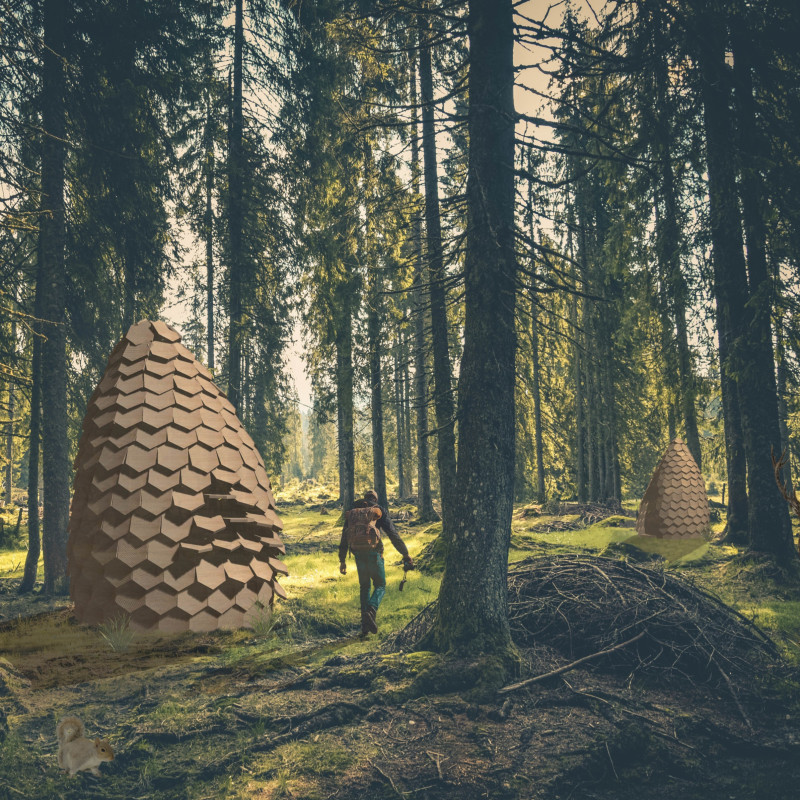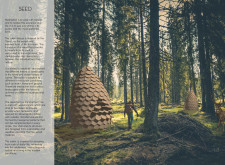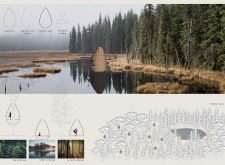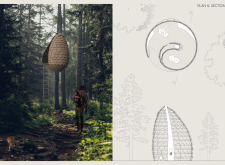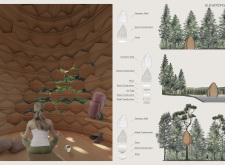5 key facts about this project
Unique Design Approach and Form
The design of "SEED" features a dynamic shell composed of interlocking hexagonal panels. This approach not only reflects the natural geometry found in seeds but also offers flexibility in the way the cabin interacts with its environment. The panels can be adjusted to create varying levels of privacy and openness, accommodating individual preferences and enhancing the user's experience of nature. The material palette mainly consists of thermo-treated wood, ensuring durability while maintaining aesthetic appeal. The structure is complemented by steel components that provide stability and longevity, and large glass surfaces that invite natural light into the space, thereby reinforcing the connection between the interior and the outdoors.
Functional Spaces and Interior Layout
Inside, the cabin is designed to facilitate meditation and relaxation. Its layout promotes comfort and accessibility, featuring ergonomic arrangements that allow for an immersive experience in a tranquil setting. The space is versatile, capable of serving both solitary meditation sessions and small group gatherings. Important features include strategically placed windows that offer views of the surrounding nature, enhancing the ambiance and promoting mindfulness. The choice of materials underscores the project's commitment to sustainability, aligning with contemporary architectural ideals aimed at minimizing environmental impact.
The "SEED" project exemplifies modern architectural practices focused on creating harmonious relationships between built environments and nature. For more details, including architectural plans and sections, and to explore the innovative ideas that underpin this design, readers are encouraged to review the project's presentation. This insight into the architectural concepts and materials used will provide a comprehensive understanding of "SEED" and its unique positioning within contemporary architectural discourse.


